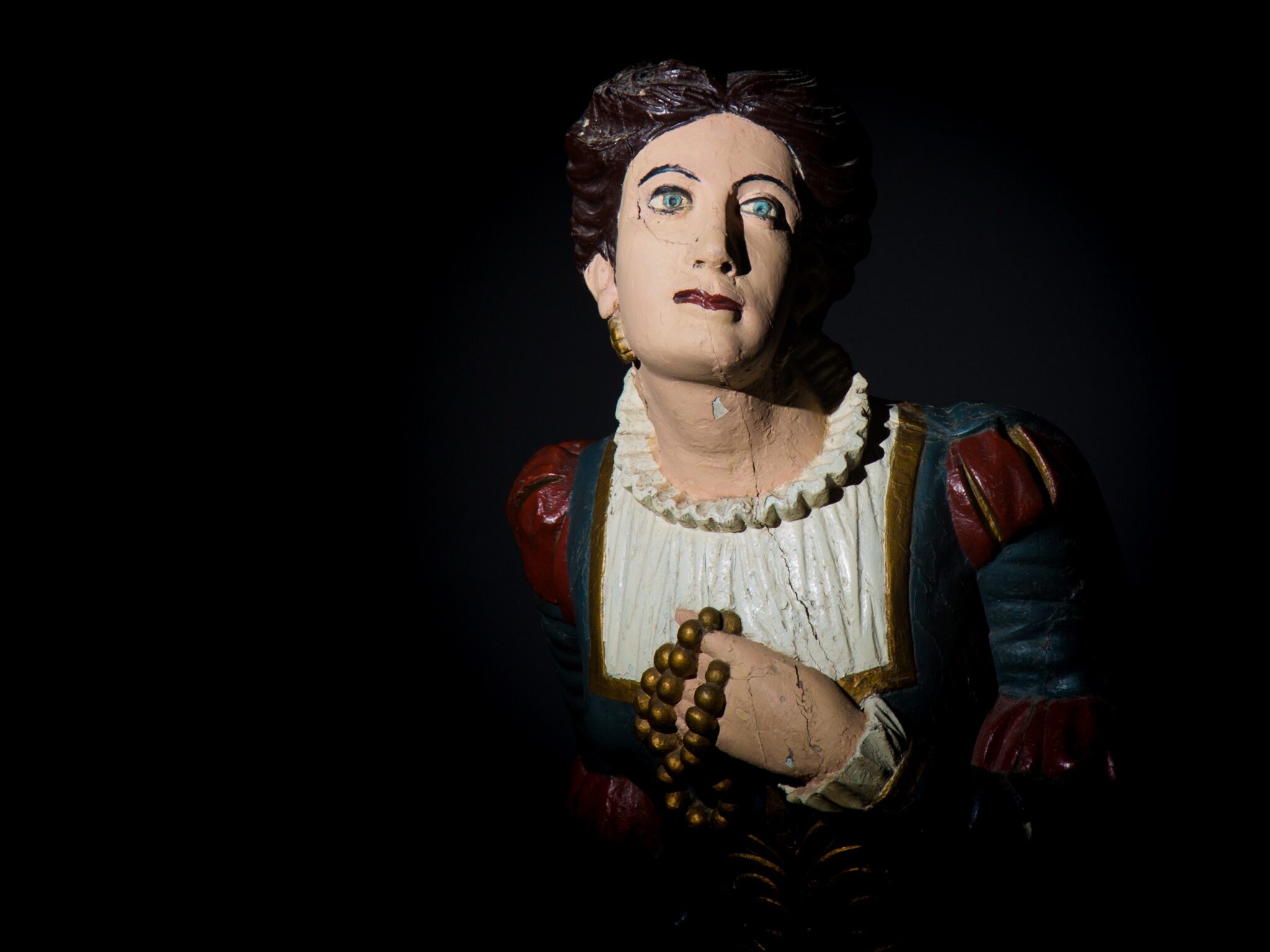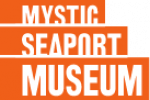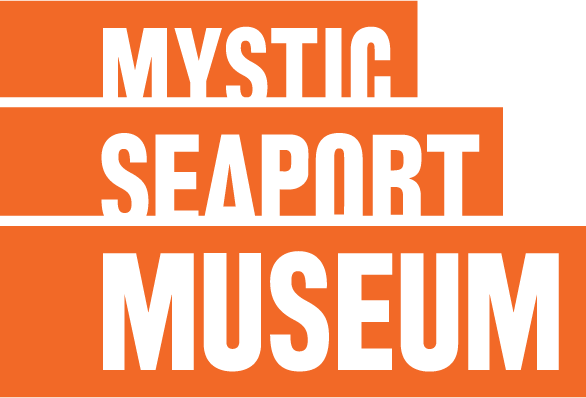
Open in the Wendell Gallery
After more than 40 years, Mystic Seaport Museum’s figureheads exhibit received a makeover. Through a generous grant from the Henry Luce Foundation, curators Katherine Hijar and Mirelle Luecke re-imagined this visitor favorite with a major new exhibit, Figureheads & Shipcarvings.
Since ancient times and across cultures, decorations have adorned the bows of boats and ships, from the Nile and the Mediterranean to the far North Atlantic and Pacific Oceans. Dutch and English ships of the 19th century were the first to sport figureheads like the ones we know today. Lions and unicorns were particular favorites of the English navy, and Dutch naval ships featured red lions. Spanish ships mounted figureheads depicting saints, no doubt to ensure blessings and safe passage. By the 18th century, European shipcarvers crafted figureheads that depicted a wide array of subjects, human and animal. The decline of figureheads came with the advent of steam power in the late 19th century, which influenced changes in the design of oceangoing ships. Since steam-powered ships no longer required rigging for sails, ships’ bows no longer provided a natural place for a figurehead to be mounted.
The new exhibit showcases the depth and breadth of the Museum’s carving collections. In addition to figureheads, it features other 19th-century ship carvings, shop figures, and our latest acquisition, a magnificent carousel hippocampus. The exhibit showcases only a fraction of the Museum’s collection. Because of space limitations, 45 figureheads and dozens of other maritime carvings will remain in the Museum’s vaults.
Ship’s figureheads were an important form of public art in the 19th century. A figurehead gave a ship its personality, and each one expressed a unique meaning, imbued with values and reflecting popular culture of the time. This reinterpretation aims to help visitors see these objects through 19th-century eyes, and to understand and appreciate the craft of carving and figureheads as an important art form.

